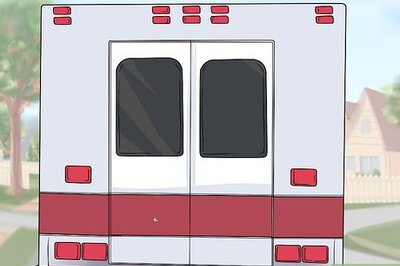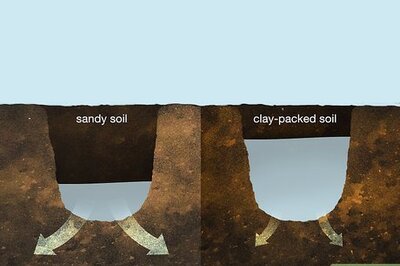
views
KOCHI: Sea accretion and erosion are regular seasonal phenomena in Kerala. So is shoreline recession. However, of late, the high rate of accretion in the beaches at Munambam, Cherai and Kuzhupilly has put both experts and local people in a puzzle.“Earlier, boats used to sail here,” Varghese Kurishingal says, pointing at the land where he is standing.Over the past few decades, the Munambam coastline has been receding at a fast rate due to accumulated sand, local fishermen said.In 2009, a park built by the Kerala Tourism Development Corporation came up on this newly-formed land.Local people say that the land was formed after the construction of a groyne here. Groynes are stone extensions into the sea built to interrupt water flow and limit the movement of sediments.“This happened after a groyne was built here. Earlier sand used to accumulate, but the waves would later sweep them away,” Varghese says. A few miles from Munambam, another groyne juts out into the sea. Now part of the Azhikode-Munakkal beach, here too acres of land have been accumulated. The 400-acre Puthuvypeen Island too is the result of sea accretion for over less than half a century. “Sea accretion and erosion are regular seasonal phenomena. Sand accumulation is mostly temporary. But Puthuvypeen is an exception. While there is an increasing accretion in the beaches at Munambam, Cherai and Kuzhupilly, sand is getting eroded in the Chellanum regions,” Prof K S Kurushan, former Dean of the College of Fisheries, Panangad, says.Munambam might be lucky for many considering the land gain, but all is not well. Ayri Pranjee’s house is less than half a km away from the Munambam Park, but here the ocean threatens to drown it any time. The waves lash right into her house, threatening to engulf it. A seawall is the only thing that protects her house from raging waves on a stormy day.Life was different for Ayri till a few years back. “Earlier, there was a whole lot of land here. Now it is just water,” she says.The residents recollect what is now long lost within the sea. “We used to have a cemetery but now the sea has taken it,” says Varghese.“It is our land that is getting accumulated there,” says Ayri, pointing to the Azhikode beach right across the sea. “The condition of the people on this coast is very difficult now. Earlier, we used to collect shell fish at this time which would fetch us a decent income,” she says.“When somebody drowns, the body gets stuck between the rocks, since there is no sand. Often we find the body only after it starts stinking,” she adds, standing beside the wreckage of a wooden shed that she lost to the sea last week.



















Comments
0 comment